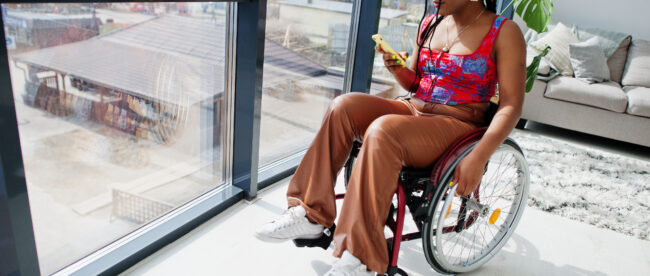Breaking Barriers: The Kelsey Civic Center Pioneers Inclusive Housing for Disabled People of Color
Disabled people of color encounter significant challenges in finding accessible housing, as housing insecurity compounds their intersecting marginalizations. The majority of existing disabled housing programs predominantly serve white individuals with higher incomes, leaving Black and Latinx people with disabilities, especially the elderly, struggling to find suitable and accessible homes. Micaela Connery, the co-founder and CEO of The Kelsey, a groundbreaking inclusive housing developer, joined forces with Mercy Housing to address this disparity.
The Kelsey Civic Center, consisting of 112 apartments and slated to open in 2025 in San Francisco, is designed to provide racially equitable, mixed-income housing that caters to people with diverse disabilities. The complex adheres to the principles of “universal design,” ensuring accessibility for individuals with physical, sensory, and cognitive disabilities. Different apartments offer specific accommodations such as roll-in showers or tubs, allowing residents to choose what suits them best.
Beyond just housing, The Kelsey Civic Center aims to create a community-focused environment. The center incorporates features like a community room, a sensory garden, and inclusion concierges to assist residents in finding support services and building connections with their neighbors. Moreover, the project goes beyond the minimum requirements of the Americans with Disabilities Act (ADA) by introducing their Housing Design Standards for Accessibility and Inclusion. These comprehensive guidelines offer architects and developers a toolkit to create more accessible and inclusive designs.
The video below as well this fact sheet highlight more details about The Kelsey Civic Center including its location and proposed rent.
The historical struggle for accessible housing rights for disabled BIPOC communities is also highlighted. In the 1970s, activists, including the Black Panther Party, fought for regulations to enforce Section 504 of the Rehabilitation Act, which aimed to ensure accessible and subsidized housing for people with disabilities. Despite legislative advancements, housing discrimination against disabled individuals, particularly people of color, remains a significant issue. Addressing housing disparities for disabled people requires going beyond legal obligations and adopting mixed-income housing approaches like The Kelsey’s to cater to diverse income needs and promote inclusivity.
Furthermore, disabled people of color are more susceptible to facing compounded risk factors in accessing housing. Black and Latinx renter households are disproportionately cost burdened, while Indigenous and Black individuals are more likely to have disabilities compared to the general population. This makes them more vulnerable to being priced out of housing. Additionally, disabled individuals are at risk of becoming chronically houseless, and poor housing conditions can lead to adverse health outcomes, perpetuating a cycle of disability, unemployment, and homelessness.
In conclusion, The Kelsey Civic Center and similar initiatives strive to bridge the gap in accessible housing for disabled BIPOC communities. By implementing scalable solutions and promoting inclusive design standards, we can empower communities to provide accessible housing that supports the well-being and equity of people with disabilities.
Leasing will begin six months prior to opening through a lottery system, likely in mid to late 2024.
PS: Definitely hit the source link below to learn a lot more about barriers disabled people of color have been facing for years when it comes to finding affordable, accessible housing.
Source: Prism


Leave a comment